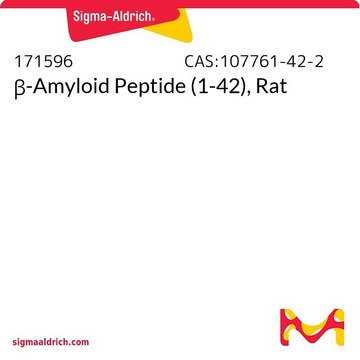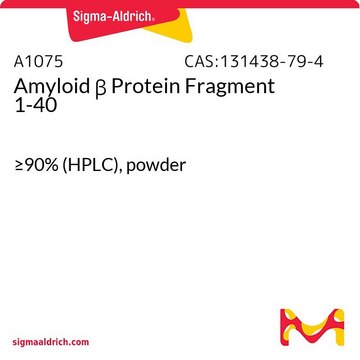All Photos(1)
About This Item
Empirical Formula (Hill Notation):
C119H194N28O33S1
Molecular Weight:
2577.05
UNSPSC Code:
12352200
NACRES:
NA.32
Recommended Products
Assay
≥80% (HPLC)
form
lyophilized
composition
Peptide Content, ≥80%
storage condition
protect from light
storage temp.
−20°C
Amino Acid Sequence
Leu-Val-Phe-Phe-Ala-Glu-Asp-Val-Gly-Ser-Asn-Lys-Gly-Ala-Ile-Ile-Gly-Leu-Met-Val-Gly-Gly-Val-Val-Ile-Ala
Application
Amyloid β (Aβ) refers to peptides derived from Amyloid precursor protein that vary in length from 36-43 amino acids. Aβ(s) peptides, their peptide fragments and mutated fragments are used to study a wide range of metabolic and regulatory functions including activation of kinases, regulation of cholesterol transport, function as a transcription factor, and regulators of inflammation. Aβ(s) peptides and their peptide fragments are also used to study oxidative stress, metal binding and mechanisms of protein cross-linking in the context of diseases such as Alzheimer′s disease and neurodegeneration.
Storage Class Code
11 - Combustible Solids
WGK
WGK 3
Flash Point(F)
Not applicable
Flash Point(C)
Not applicable
Regulatory Information
常规特殊物品
Choose from one of the most recent versions:
Certificates of Analysis (COA)
Lot/Batch Number
Don't see the Right Version?
If you require a particular version, you can look up a specific certificate by the Lot or Batch number.
Already Own This Product?
Find documentation for the products that you have recently purchased in the Document Library.
Yifat Miller et al.
Biophysical journal, 97(4), 1168-1177 (2009-08-19)
Abeta(17-42) (so-called p3) amyloid is detected in vivo in the brains of individuals with Alzheimer's disease or Down's syndrome. We investigated the polymorphism of Abeta(17-42) oligomers based on experimental data from steady-state NMR measurements, electron microscopy, two-dimensional hydrogen exchange, and
Jie Zheng et al.
The journal of physical chemistry. B, 112(22), 6856-6865 (2008-05-07)
We report all-atom molecular dynamics simulations of annular beta-amyloid (17-42) structures, single- and double-layered, in solution. We assess the structural stability and association force of Abeta annular oligomers associated through different interfaces, with a mutated sequence (M35A), and with the
Wanli Wei et al.
Brain : a journal of neurology, 125(Pt 9), 2036-2043 (2002-08-17)
The p3 peptide [amyloid beta-peptide (Abeta) 17-40/42], derived by alpha- and gamma-secretase cleavage of the amyloid precursor protein (APP), is a major constituent of diffuse plaques in Alzheimer's disease and cerebellar pre-amyloid in Down's syndrome. However, the importance of p3
Nikolay Blinov et al.
Biophysical journal, 98(2), 282-296 (2010-03-27)
Amyloid fibrils are associated with many neurodegenerative diseases. It was found that amyloidogenic oligomers, not mature fibrils, are neurotoxic agents related to these diseases. Molecular mechanisms of infectivity, pathways of aggregation, and molecular structure of these oligomers remain elusive. Here
Our team of scientists has experience in all areas of research including Life Science, Material Science, Chemical Synthesis, Chromatography, Analytical and many others.
Contact Technical Service

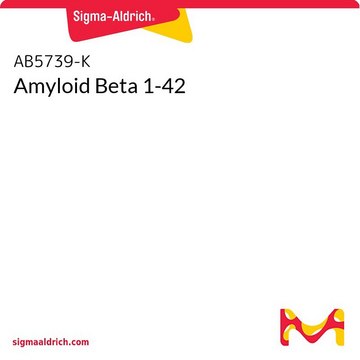
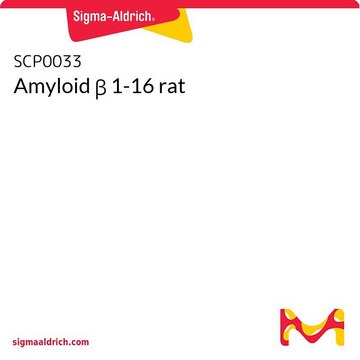
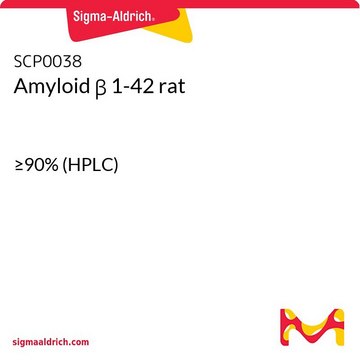
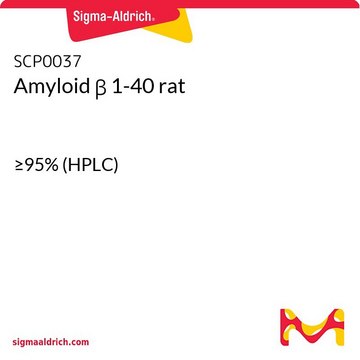
![[Ala28]-Amyloid β 25-35 ≥95% (HPLC)](/deepweb/assets/sigmaaldrich/product/images/306/938/dd9f7c72-cfca-4ea3-8e10-a7a2a7994639/640/dd9f7c72-cfca-4ea3-8e10-a7a2a7994639.jpg)
